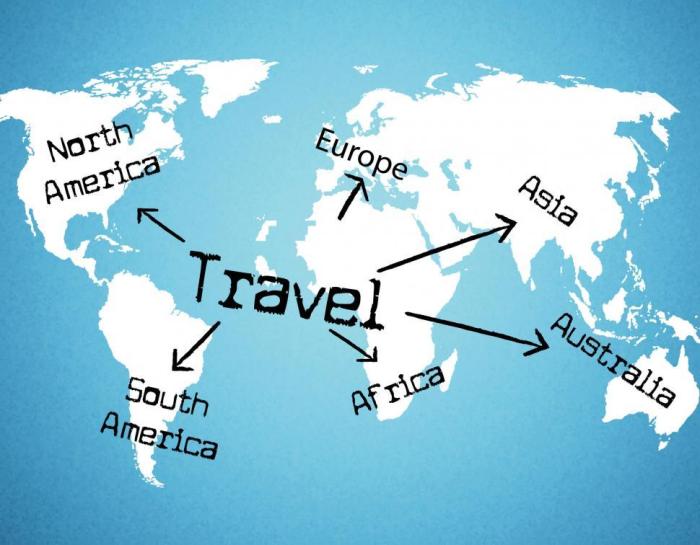
The allure of worldwide travel is undeniable, promising unforgettable experiences and cultural immersion. However, the unexpected can strike anywhere, anytime. This is where worldwide travel insurance steps in, acting as your safety net against unforeseen circumstances and ensuring peace of mind as you explore the globe. From medical emergencies in far-flung locations to lost luggage and trip cancellations, understanding the nuances of worldwide travel insurance is crucial for a truly worry-free adventure.
This comprehensive guide delves into the intricacies of worldwide travel insurance, clarifying its scope, comparing different policy types, and outlining the essential considerations for securing the right coverage. We’ll explore factors influencing costs, the claims process, and provide real-world examples to illustrate the importance of this vital travel companion.
Coverage Aspects of Worldwide Travel Insurance
Worldwide travel insurance offers a crucial safety net for unforeseen events during your travels. A comprehensive policy can provide financial protection against a range of circumstances, mitigating potential losses and ensuring peace of mind while exploring the globe. Understanding the typical coverage areas and limitations is key to selecting a policy that suits your individual needs and travel style.
Most worldwide travel insurance policies encompass several key areas of coverage. These typically include medical emergencies, trip cancellations or interruptions, lost or delayed baggage, and sometimes even emergency evacuation or repatriation. The specific details and limits of coverage will vary depending on the insurer and the chosen plan. It’s vital to carefully review the policy wording before purchasing to ensure it aligns with your travel plans and risk tolerance.
Medical Emergency Coverage
Medical emergencies, including accidents and illnesses, can incur substantial costs, especially in foreign countries. Worldwide travel insurance often covers medical expenses, hospital stays, emergency medical evacuation, and repatriation of remains. For example, if you were to suffer a serious injury requiring hospitalization in a remote location, your insurance could cover the costs of treatment, ambulance transport, and even a flight back to your home country for further care. The policy will usually specify a maximum amount it will pay towards medical expenses.
Trip Cancellation and Interruption Coverage
Unexpected events can disrupt travel plans. Worldwide travel insurance typically offers coverage for trip cancellations or interruptions due to reasons such as severe weather, natural disasters, or family emergencies. For instance, if a volcanic eruption forces the cancellation of your flight and subsequent trip, your insurance might reimburse you for non-refundable expenses such as flights, accommodation, and pre-paid tours. The policy will Artikel the specific circumstances under which cancellation or interruption coverage applies.
Lost or Delayed Baggage Coverage
Losing your luggage can be a significant inconvenience, especially when it contains essential items or irreplaceable belongings. Worldwide travel insurance often provides coverage for lost, stolen, or delayed baggage, reimbursing you for the cost of replacing essential items or covering the expenses incurred while waiting for your luggage to be located. Imagine arriving at your destination only to discover your checked bag is missing; your insurance could help you purchase essential clothing and toiletries until your luggage is recovered. The level of reimbursement is often capped at a certain amount per item and per trip.
Understanding Policy Exclusions and Limitations
It’s equally important to understand what your travel insurance *doesn’t* cover. All policies have exclusions and limitations. Failing to understand these could leave you with unexpected financial burdens. Carefully reading the policy document is crucial to avoid disappointment.
Common exclusions and limitations are often clearly stated in the policy documents. It is crucial to understand these limitations to avoid any unpleasant surprises during your trip.
Common Exclusions in Worldwide Travel Insurance Policies
- Pre-existing medical conditions: Many policies will not cover medical expenses related to conditions you had before purchasing the insurance.
- Adventure sports and activities: Participation in high-risk activities, such as bungee jumping or extreme skiing, may not be covered.
- Acts of war or terrorism: Coverage for medical expenses or trip cancellations resulting from war or terrorism is often excluded.
- Intoxication or illegal activities: Claims related to injuries or losses sustained while under the influence of alcohol or drugs, or while engaging in illegal activities, are usually not covered.
- Failure to follow medical advice: If you fail to follow medical advice provided by a doctor and this worsens your condition, coverage may be limited or denied.
Factors Influencing Worldwide Travel Insurance Costs

The price of worldwide travel insurance is not a fixed amount; it’s a dynamic figure influenced by several interconnected factors. Understanding these factors allows travelers to make informed decisions and choose a policy that offers the right balance of coverage and cost. This section will delve into the key elements that determine the final price of your travel insurance.
Several key factors contribute significantly to the overall cost of worldwide travel insurance. These factors interact in complex ways, sometimes multiplying the impact on the final premium. Understanding these influences helps travelers budget effectively and select appropriate coverage.
Age of the Traveler
Age is a significant factor influencing insurance premiums. Generally, older travelers face higher premiums than younger travelers. This is because statistically, older individuals are at a higher risk of experiencing health issues during their travels, leading to increased claim payouts for insurers. For example, a 65-year-old traveler will typically pay considerably more than a 25-year-old traveler for the same level of coverage. This reflects the increased likelihood of needing medical attention.
Trip Destination
The destination of your trip heavily influences the cost of insurance. Travel to regions with higher risks of political instability, natural disasters, or health concerns (e.g., areas with prevalent infectious diseases) will usually command higher premiums. A trip to a remote trekking location in Nepal will cost more to insure than a trip to a major European city due to the increased risk factors involved in the former.
Length of Trip
The duration of your trip is directly proportional to the cost of your insurance. Longer trips naturally increase the probability of incidents occurring, thus leading to higher premiums. A month-long backpacking trip will be significantly more expensive to insure than a week-long city break.
Pre-existing Medical Conditions
Pre-existing medical conditions significantly impact insurance costs. Individuals with pre-existing conditions may find it more challenging to obtain comprehensive coverage or may face higher premiums. Insurers assess the potential risk associated with these conditions and adjust premiums accordingly. For instance, someone with a history of heart conditions will likely pay more than someone with no significant health issues. Some insurers may even exclude coverage for specific pre-existing conditions.
Level of Coverage
The level of coverage selected directly impacts the cost. Comprehensive plans offering extensive medical coverage, emergency evacuation, trip cancellation, and baggage loss protection will be more expensive than basic plans that only offer limited coverage. Choosing a higher level of coverage means greater financial protection but also a higher premium.
Pricing Structures of Different Insurance Providers
Insurance providers utilize varying pricing models. Some focus on offering competitive base prices with add-ons for specific coverage enhancements, while others offer tiered packages with pre-defined coverage levels at different price points. Comparing quotes from multiple providers is crucial to find the best value for your needs. Factors such as the insurer’s risk assessment models, administrative costs, and profit margins also play a role in determining the final price.
Impact of Coverage Level on Cost
The table below illustrates how different factors influence the price of a sample worldwide travel insurance policy for a 30-year-old traveler. Note that these are illustrative examples and actual prices will vary based on the specific insurer and policy details.
| Factor | Low Coverage | Medium Coverage | High Coverage |
|---|---|---|---|
| Trip Duration (7 days) | $50 | $75 | $100 |
| Trip Duration (14 days) | $75 | $110 | $150 |
| Trip Destination (Europe) | $50 | $75 | $100 |
| Trip Destination (South America) | $70 | $100 | $140 |
| Pre-existing Condition (None) | $50 | $75 | $100 |
| Pre-existing Condition (Minor) | $75 | $110 | $150 |
Purchasing and Claiming Worldwide Travel Insurance
Securing worldwide travel insurance involves a straightforward process, whether you prefer the convenience of online purchasing or the personalized service of an offline approach. Understanding the nuances of both methods, along with the claim process, is crucial for a worry-free travel experience.
Online Purchase of Worldwide Travel Insurance
Purchasing travel insurance online offers speed and accessibility. Many reputable insurance providers offer comprehensive online platforms with clear policy comparisons and instant quotes. The process typically involves selecting your trip details (dates, destinations, travelers), reviewing coverage options, and completing a secure online payment. After purchase, you’ll receive your policy documents electronically. Some providers allow for immediate policy activation, while others may require a short processing period.
Offline Purchase of Worldwide Travel Insurance
Alternatively, you can purchase worldwide travel insurance offline through travel agents, insurance brokers, or directly from insurance companies with physical offices. This method allows for personalized consultations, where agents can help you select the most suitable policy based on your individual needs and travel plans. You’ll typically complete an application form and pay via various methods, receiving your policy documents physically or electronically. This approach may offer a more personal touch but often involves longer processing times compared to online purchases.
Filing a Claim for Medical Expenses
To file a claim for medical expenses incurred during your trip, you must first gather all necessary documentation, including your policy documents, medical bills (itemized), doctor’s reports detailing your diagnosis and treatment, and any receipts for medication or other related expenses. Then, contact your insurance provider as soon as possible, usually via phone or online portal, to report the incident and begin the claim process. You’ll likely be required to complete a claim form providing details of the incident, medical treatment received, and the associated costs. The provider will then review your claim and process the reimbursement according to your policy terms. Expect some processing time, often several weeks, before receiving payment.
Filing a Claim for Trip Cancellations
Filing a claim for trip cancellations due to unforeseen circumstances (e.g., severe illness, natural disaster) requires providing evidence supporting the reason for cancellation. This typically includes medical certificates, official documentation from authorities confirming the event, and any relevant correspondence with airlines or tour operators. Similar to medical expense claims, you’ll contact your insurance provider, report the cancellation, complete a claim form, and provide all supporting documentation. The provider will review the claim and determine eligibility based on your policy’s terms and conditions. Again, expect a processing time before reimbursement is issued. Note that many policies require cancellations to be reported within a specific timeframe.
Documentation Required for a Successful Insurance Claim
Comprehensive documentation is paramount for a smooth claims process. Generally, this includes: a copy of your insurance policy, proof of payment for the insurance, detailed medical reports and bills (for medical claims), official documentation confirming trip cancellation reasons (for cancellation claims), copies of flight/hotel bookings, and receipts for any other relevant expenses. The more detailed and organized your documentation, the quicker and easier the claim process will be.
Tips for a Smooth and Efficient Claims Process
Several steps can significantly improve the efficiency of your claim process. Firstly, read your policy carefully before your trip to understand coverage limits and procedures. Secondly, keep all relevant documents organized in a safe place. Thirdly, report incidents promptly to your insurer. Fourthly, provide complete and accurate information on all claim forms. Finally, maintain open communication with your insurer throughout the claims process. Proactive communication and well-organized documentation will significantly contribute to a swift and successful resolution.
Essential Considerations Before Purchasing

Purchasing worldwide travel insurance is a crucial step in ensuring a safe and worry-free trip. However, simply buying the first policy you see isn’t sufficient. Careful consideration of several key factors is vital to secure the best possible coverage for your specific needs and travel plans. Failing to do so could leave you vulnerable to unexpected expenses and complications.
Reading the policy document thoroughly is paramount. Don’t just skim the highlights; delve into the details. Understanding the fine print will prevent unpleasant surprises later. Pay close attention to exclusions, limitations, and the claims process. A thorough understanding of the policy’s terms and conditions ensures you know exactly what is and isn’t covered. This prevents misunderstandings and potential disputes when filing a claim.
Policy Comparison and Selection
Comparing different policies is essential to finding the best fit. Various providers offer different levels of coverage, benefits, and premiums. Consider factors such as the duration of your trip, your destination(s), planned activities (e.g., extreme sports increase risk), and your pre-existing medical conditions. Use comparison websites or consult with an insurance broker to streamline this process. Factors such as the reputation of the insurer and their customer service record should also be considered. For example, comparing a policy offering only basic medical coverage with one including trip cancellation and baggage loss will reveal significant differences in protection.
Understanding Policy Terms and Conditions
The policy’s terms and conditions define the scope of coverage. These conditions specify what events are covered, the limits of liability, and the procedures for filing a claim. Understanding these terms is crucial to avoid misunderstandings or disputes. For instance, some policies might exclude pre-existing conditions, while others might offer limited coverage. Similarly, the definition of “trip cancellation” might vary between policies, impacting what qualifies for reimbursement. Carefully reviewing these terms ensures that you are fully aware of your rights and responsibilities.
Determining Appropriate Coverage Level
The appropriate level of coverage depends on the planned activities and destination risks. A trip to a remote trekking location necessitates a higher level of medical and emergency evacuation coverage compared to a city break in a developed country. Similarly, engaging in adventure sports requires specialized coverage not typically included in standard travel insurance policies. Consider the potential costs associated with medical emergencies, trip cancellations, lost baggage, and other unforeseen events in your chosen destination. For example, medical expenses in some countries can be exorbitant, making comprehensive medical coverage a necessity. Similarly, a trip involving high-risk activities would require specialized coverage that addresses the increased risk.
Illustrative Examples of Coverage Scenarios
Understanding how worldwide travel insurance works in practice is crucial. The following scenarios illustrate the types of situations covered and the processes involved in making a claim. Remember, specific coverage details vary depending on your policy, so always refer to your policy wording for complete information.
Medical Emergency Overseas
Imagine you’re hiking in the Himalayas and suffer a serious fall, resulting in a broken leg. You’re airlifted to the nearest hospital in Kathmandu, Nepal, incurring significant medical expenses. Your worldwide travel insurance policy covers emergency medical treatment, including hospitalization, surgery, and medication. The insurer arranges for a medical evacuation back to your home country, once you’re medically stable, via an air ambulance. Your policy also covers the cost of a companion to travel with you during repatriation, along with the associated expenses like airport transfers and accommodation. The total cost of your medical treatment, air ambulance, and repatriation could easily exceed $50,000 – a cost your insurance policy significantly reduces or eliminates. The claim process would typically involve submitting your medical bills, air ambulance invoices, and other relevant documentation to your insurer, who will then process your claim according to the terms of your policy.
Flight Cancellation
You’re on your way to a much-anticipated vacation in Italy when your flight is unexpectedly cancelled due to unforeseen circumstances such as severe weather. Your travel insurance policy, covering trip interruptions and flight cancellations, steps in. The insurer covers the cost of a replacement flight to your destination, including any fare difference. If the cancellation forces you to stay an extra night in the airport hotel, your insurance might also reimburse you for that accommodation and meals. The process would involve submitting proof of the flight cancellation (such as a confirmation from the airline), your new flight ticket, and hotel receipts to your insurer. They will assess the claim and process the reimbursement based on your policy limits and terms. For instance, if your original flight cost $800 and your replacement flight cost $1200, the insurer would likely cover the $400 difference, along with reasonable expenses incurred due to the delay.
Lost or Stolen Luggage
On arrival at your hotel in London after a long flight, you discover your checked luggage is missing. Your worldwide travel insurance covers lost or stolen luggage. You immediately report the loss to the airline and the police, obtaining the necessary documentation. You then contact your insurer and provide them with details of the lost luggage, including the airline’s incident report, the police report, and a list of the items contained within. The insurer will assess your claim, taking into account the value of your belongings and the policy’s limits for baggage loss. They will then reimburse you for the reasonable cost of replacing essential items, such as clothing and toiletries, and might also compensate you for the value of other lost items up to the policy’s maximum limit for baggage loss. For example, if your luggage contained clothing valued at $500 and electronics worth $1000, but your policy has a $1500 limit for baggage loss, the insurer would likely cover the full cost of replacing the lost items. The claim process would likely involve providing receipts for replacement items to support your claim.
Final Review

Embarking on a journey across the world requires careful planning and preparedness. While the excitement of exploring new cultures and landscapes is paramount, securing appropriate worldwide travel insurance is equally vital. By understanding the various policy options, coverage details, and claims procedures, travelers can confidently embrace the unexpected and focus on creating lasting memories, knowing they have a reliable safety net in place. Remember to carefully compare policies, understand exclusions, and choose a plan that aligns perfectly with your individual travel needs and risk tolerance.
Query Resolution
What are the typical waiting periods for claims?
Waiting periods vary depending on the insurer and the type of claim. Check your policy documents for specific details, but expect some waiting period for certain benefits.
Can I purchase worldwide travel insurance if I have pre-existing medical conditions?
Yes, but you may need to disclose these conditions when applying. Coverage for pre-existing conditions may be limited or require additional documentation.
What happens if my trip is cancelled due to unforeseen circumstances like a natural disaster?
Most comprehensive policies cover trip cancellations due to unforeseen circumstances, including natural disasters, provided the event is outside your control and documented. Check your policy for specific details.
How do I choose the right level of coverage?
Consider the length of your trip, your destination’s risk level, planned activities (e.g., adventure sports), and your budget. Higher coverage levels offer broader protection but come at a higher cost.